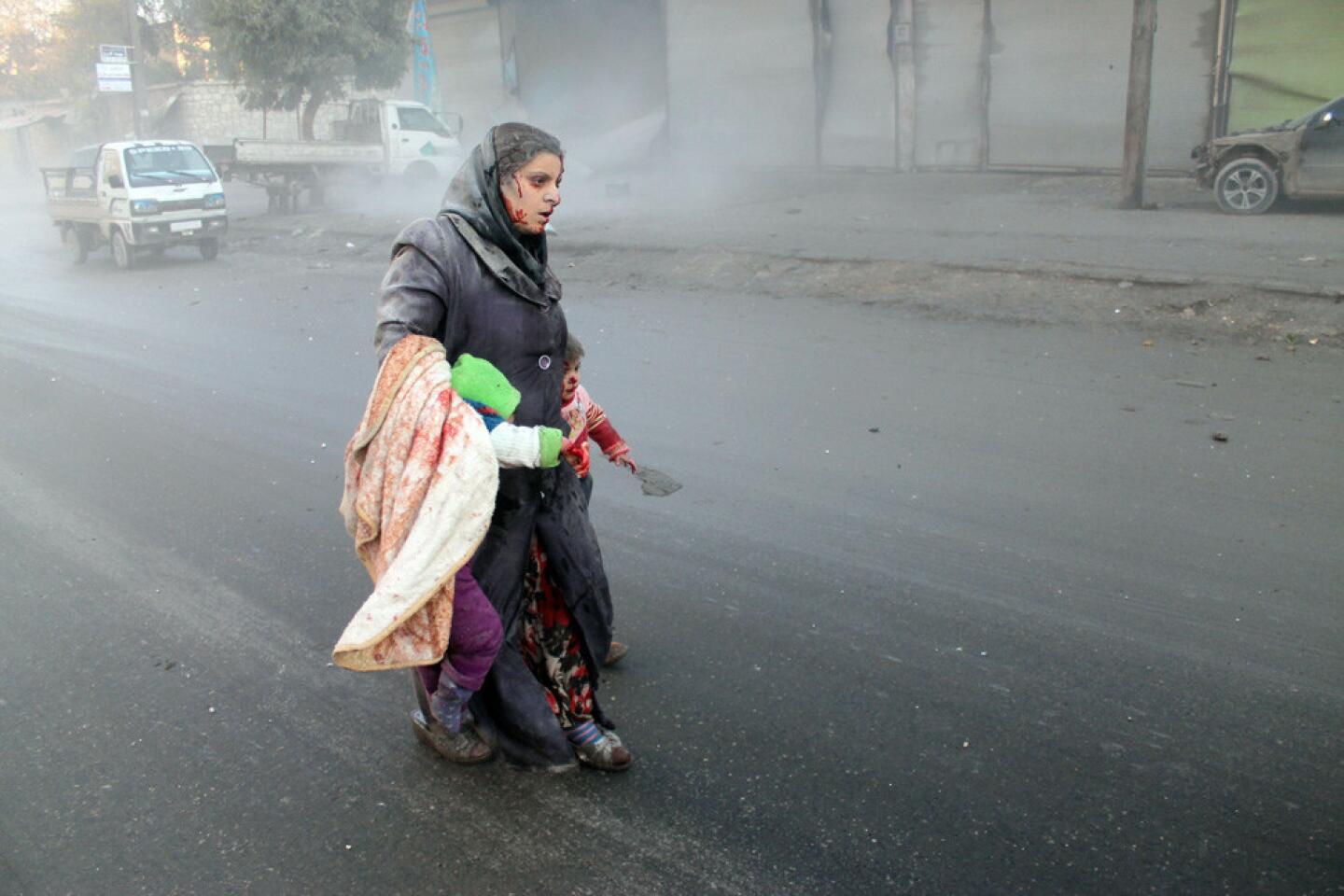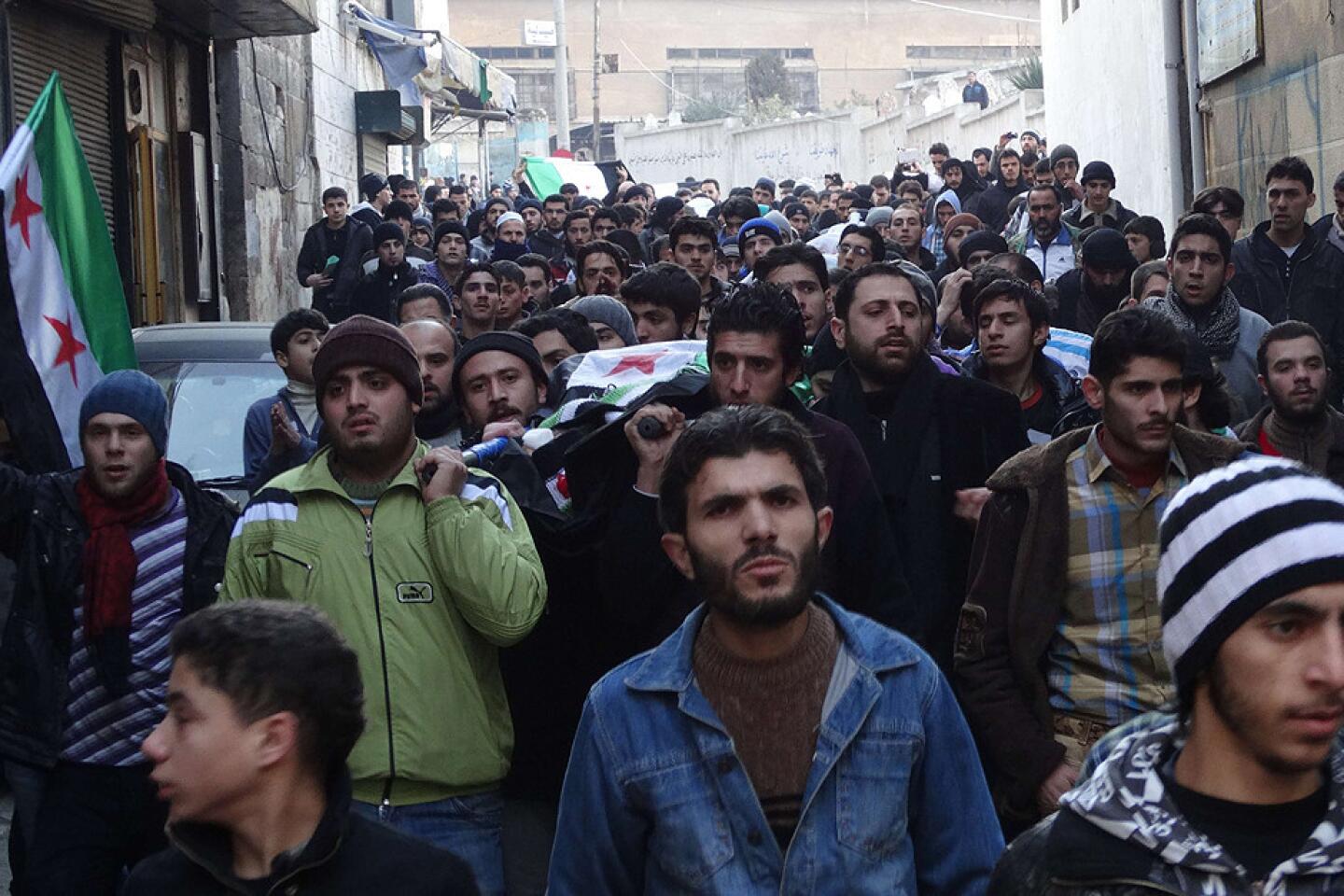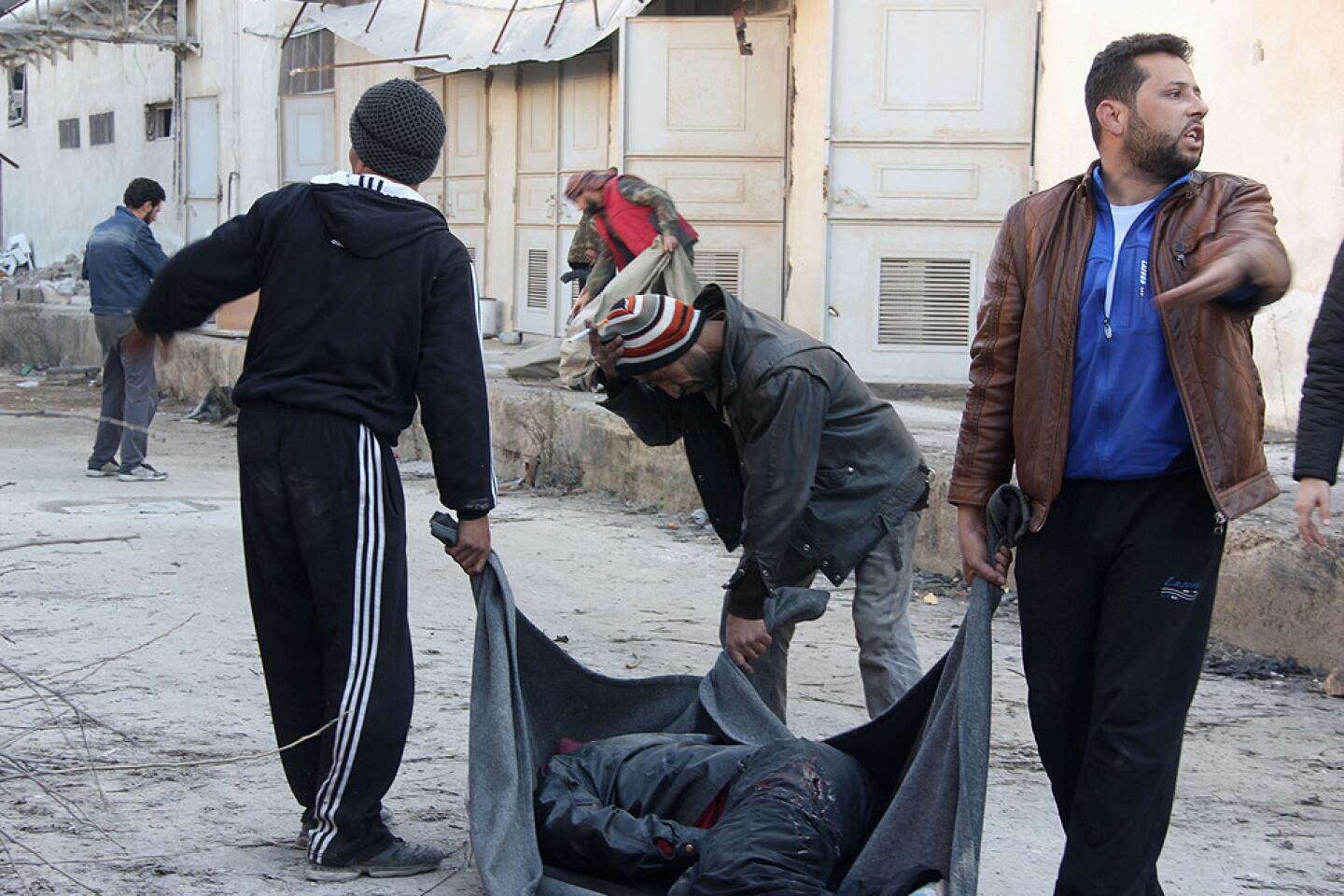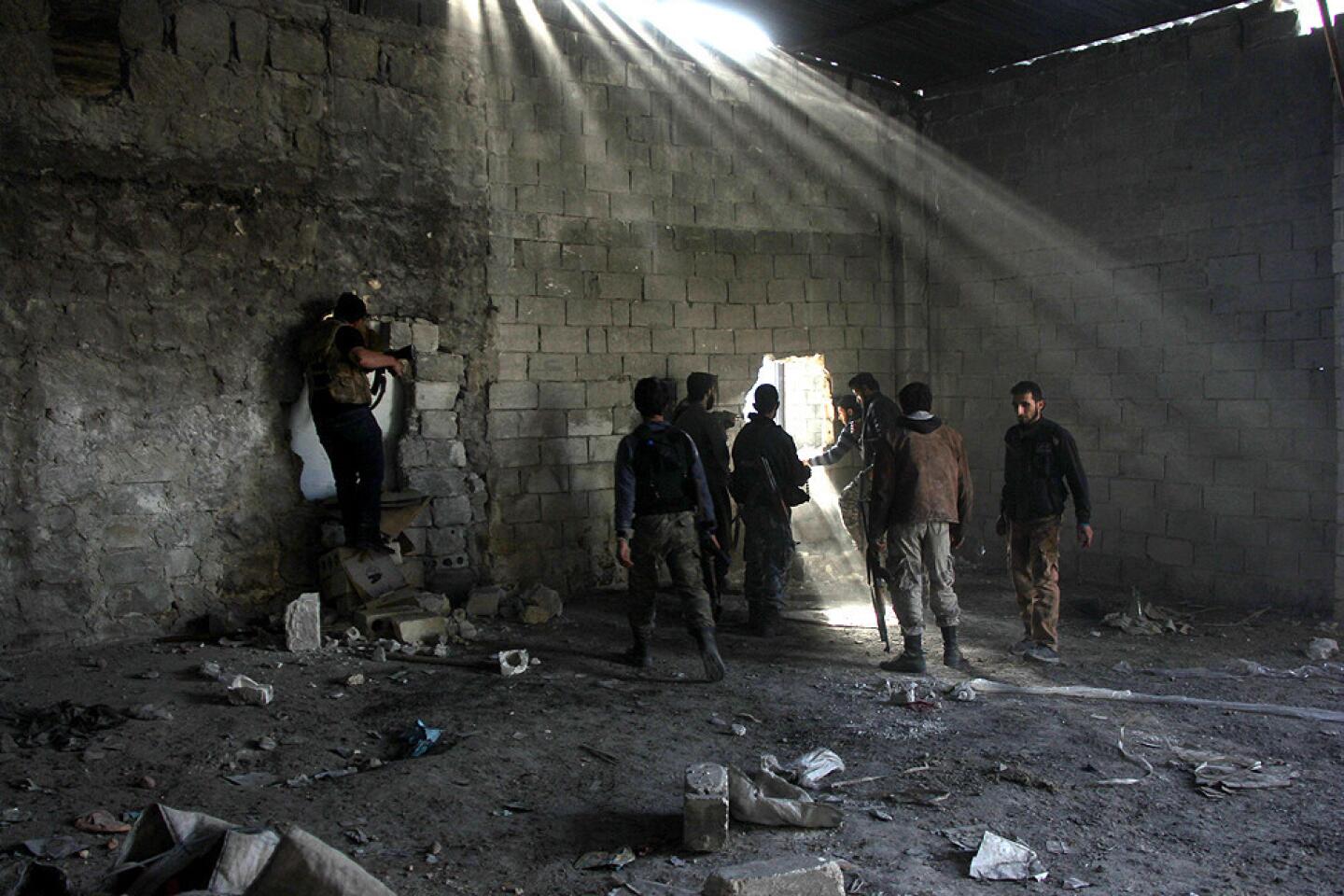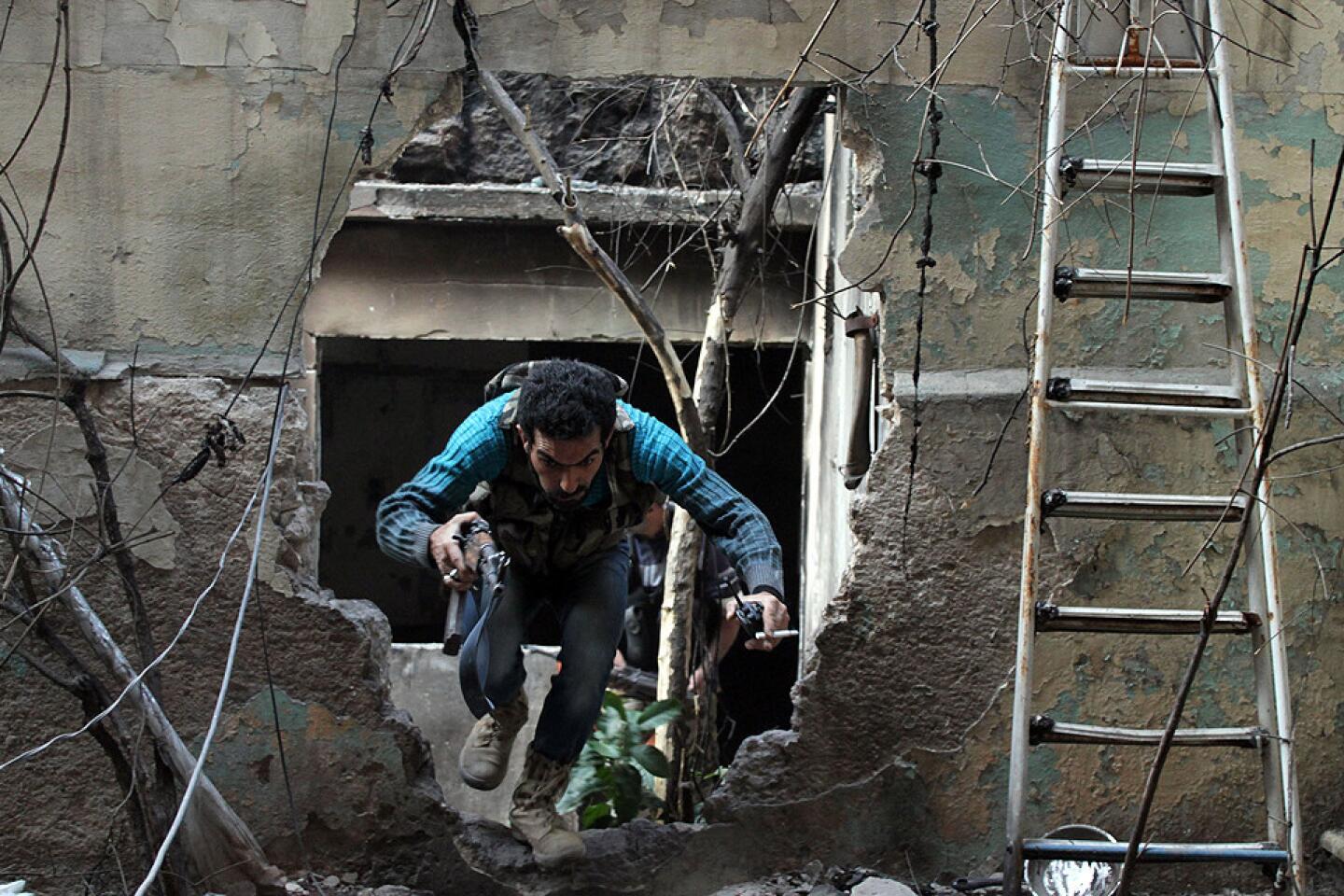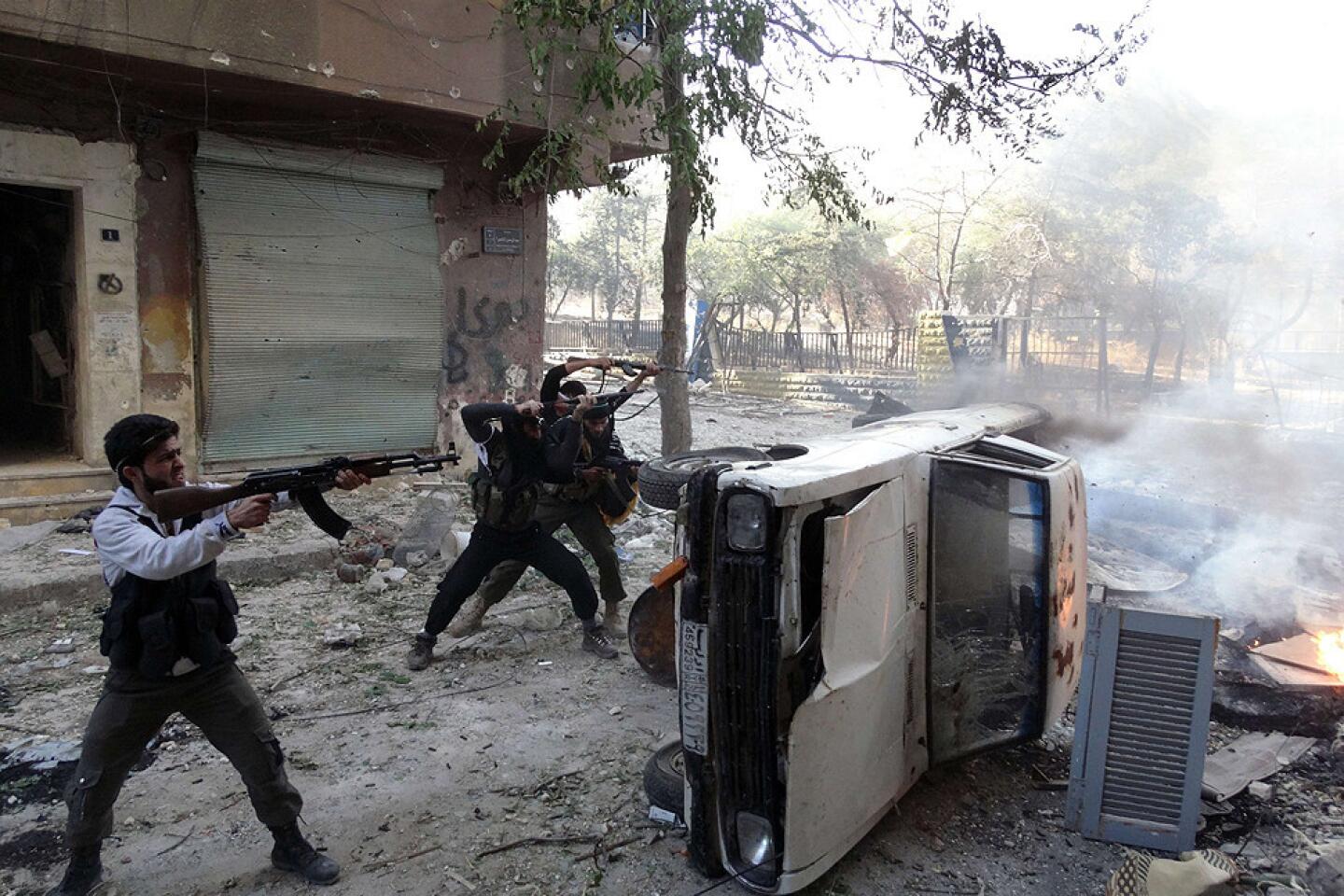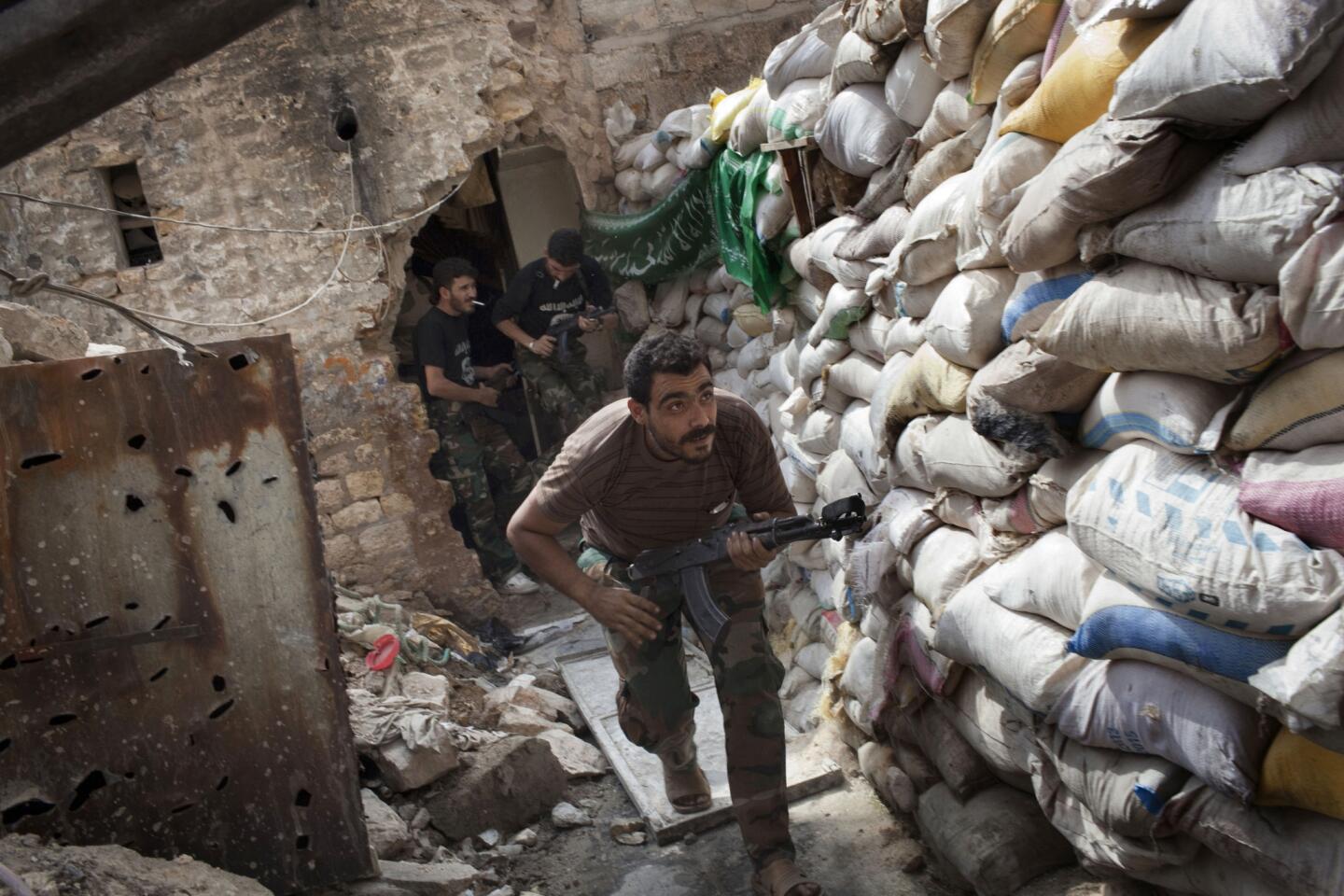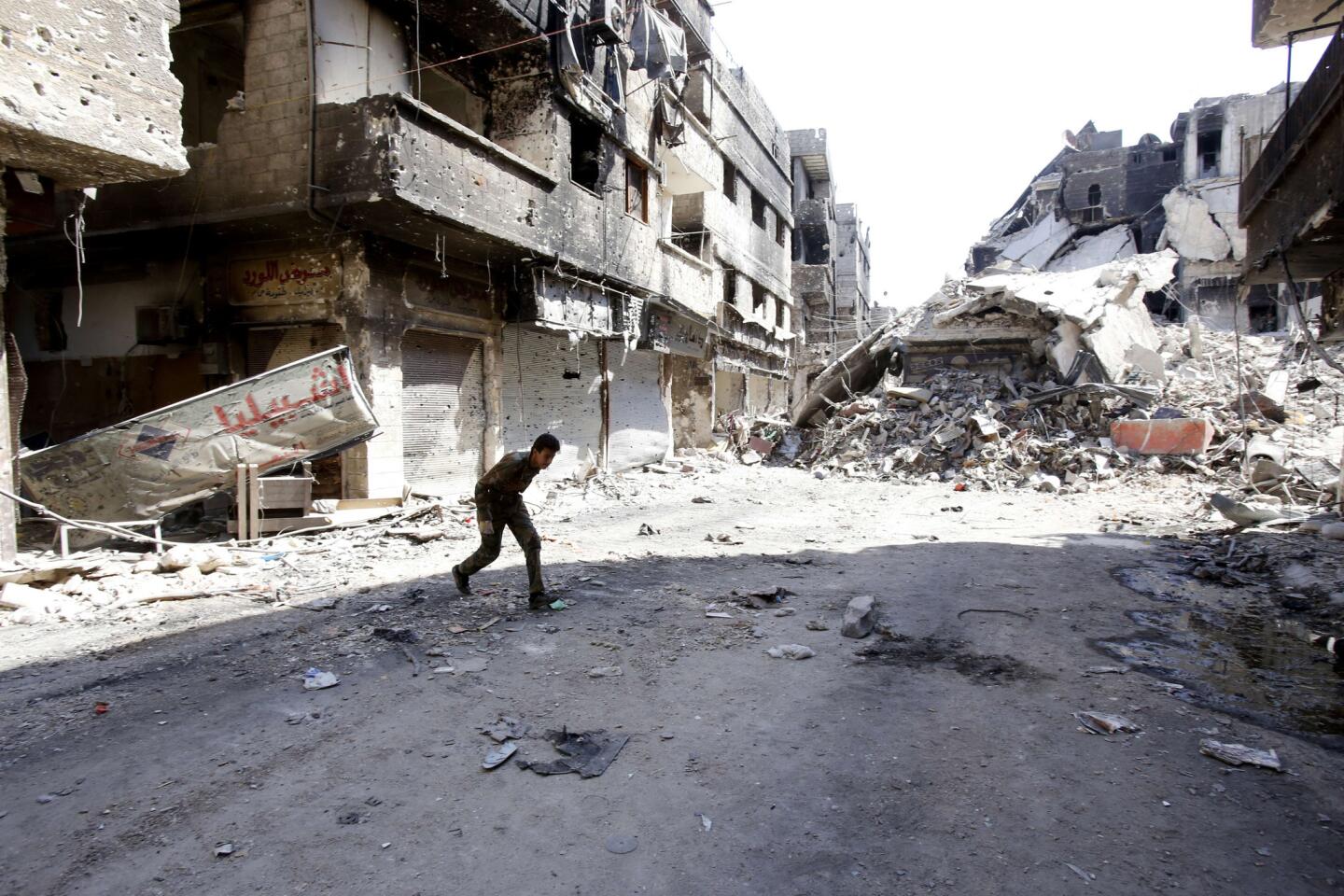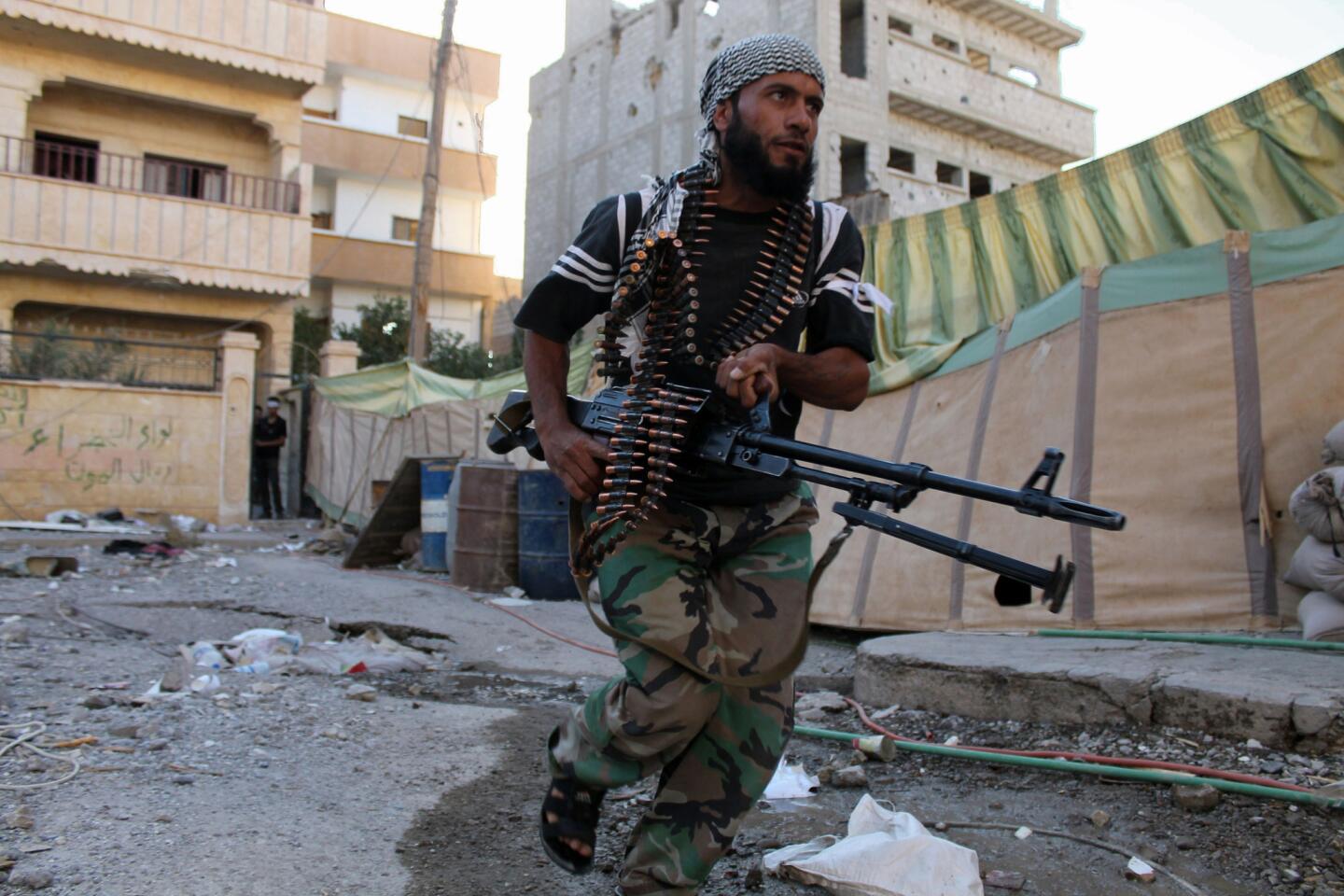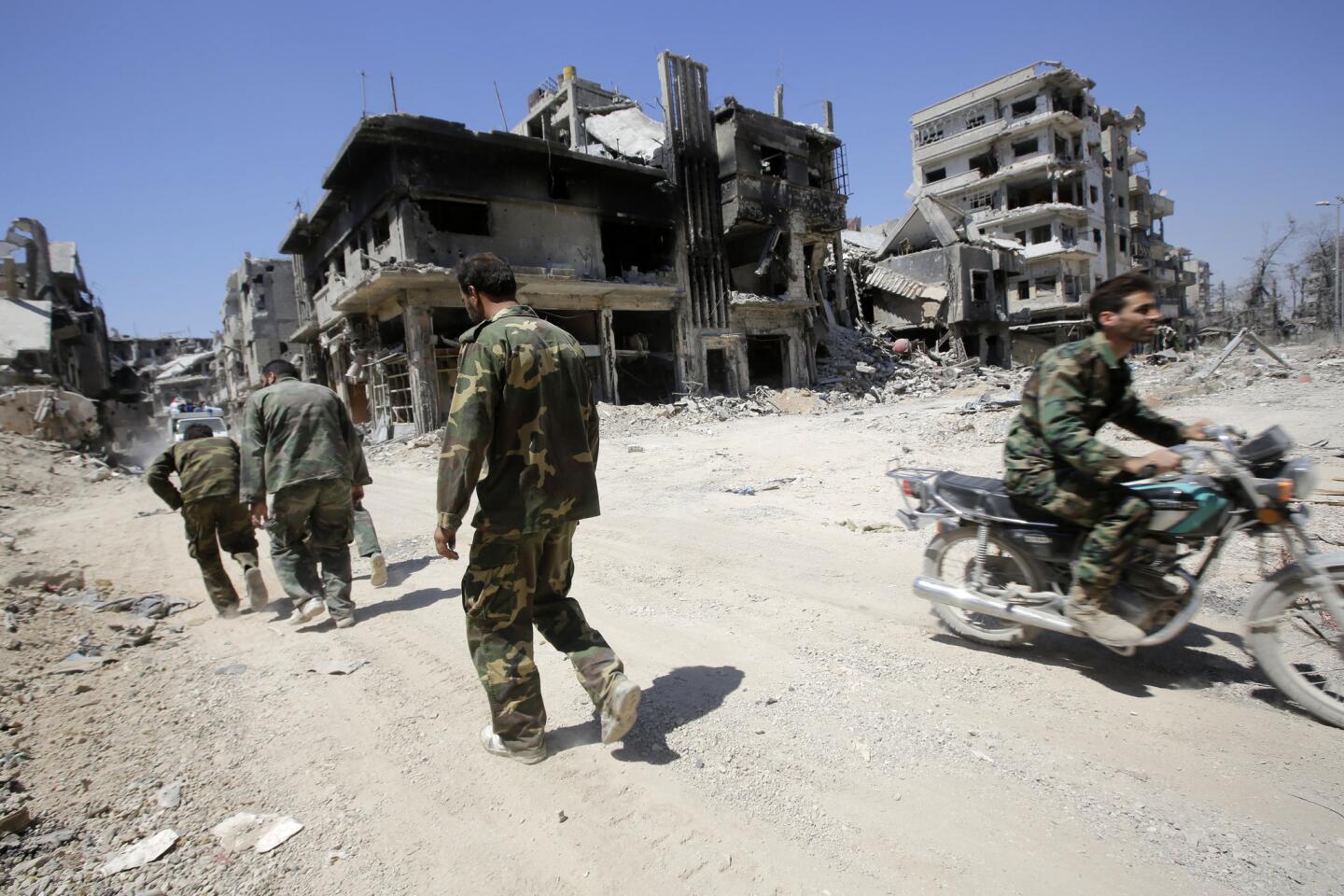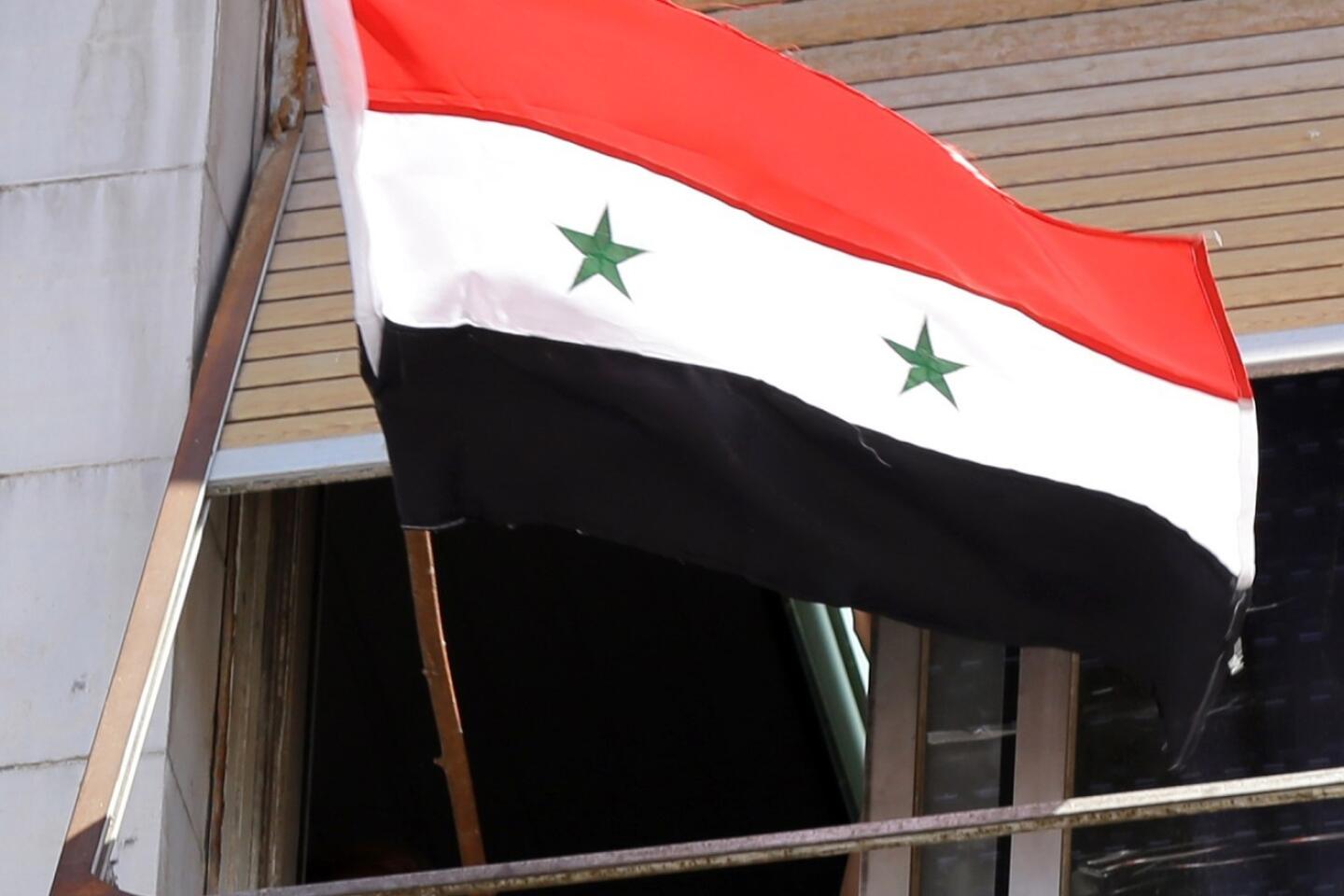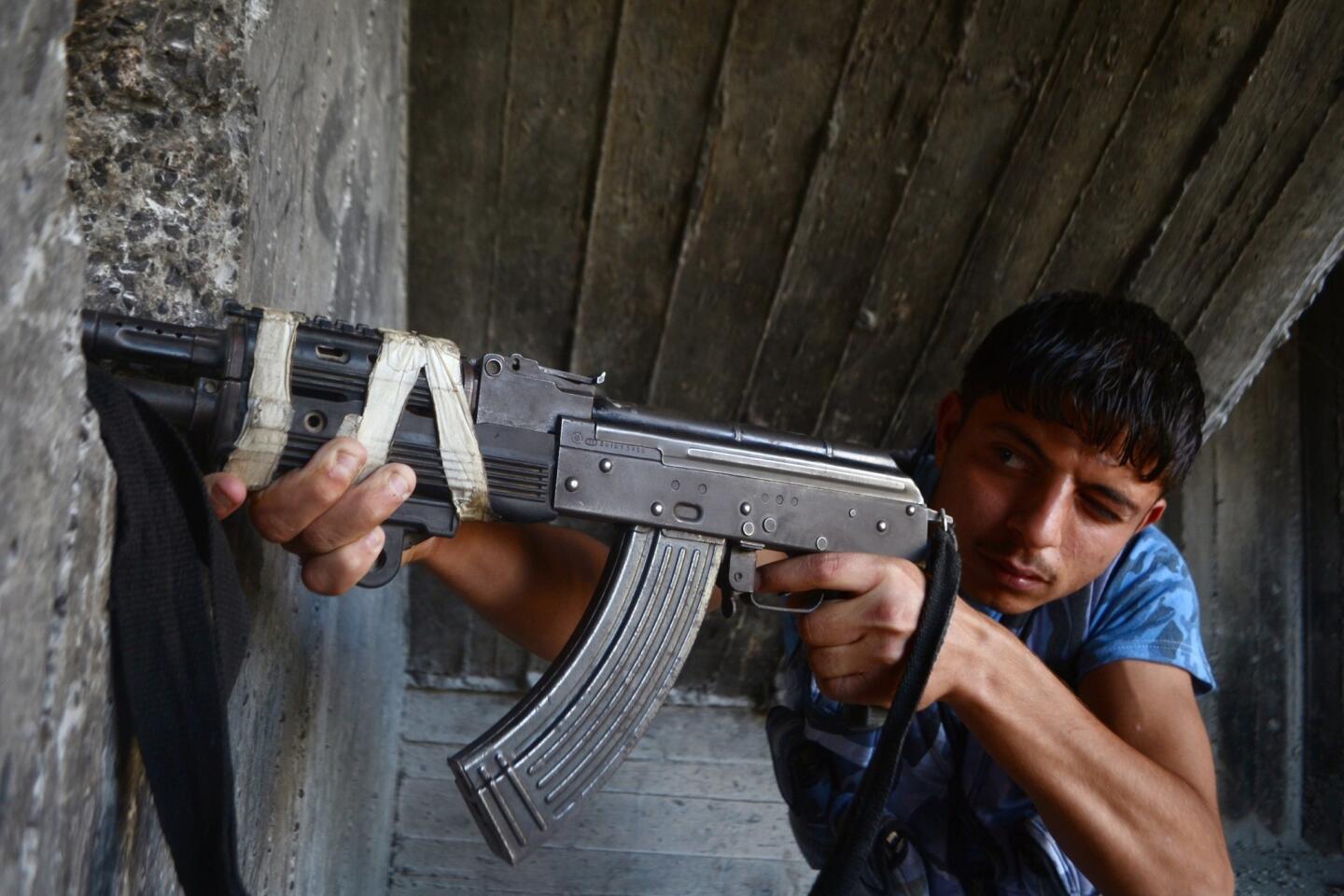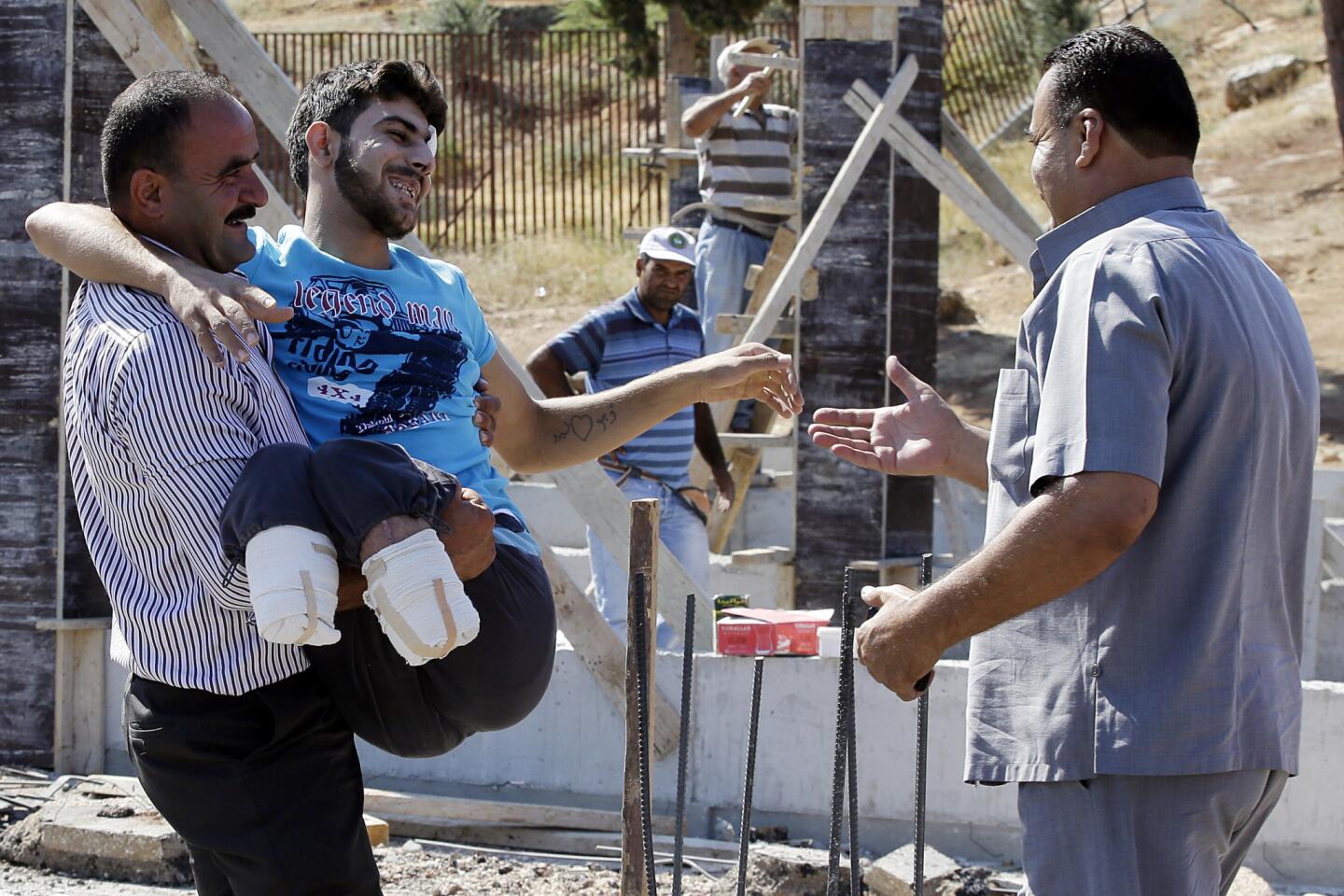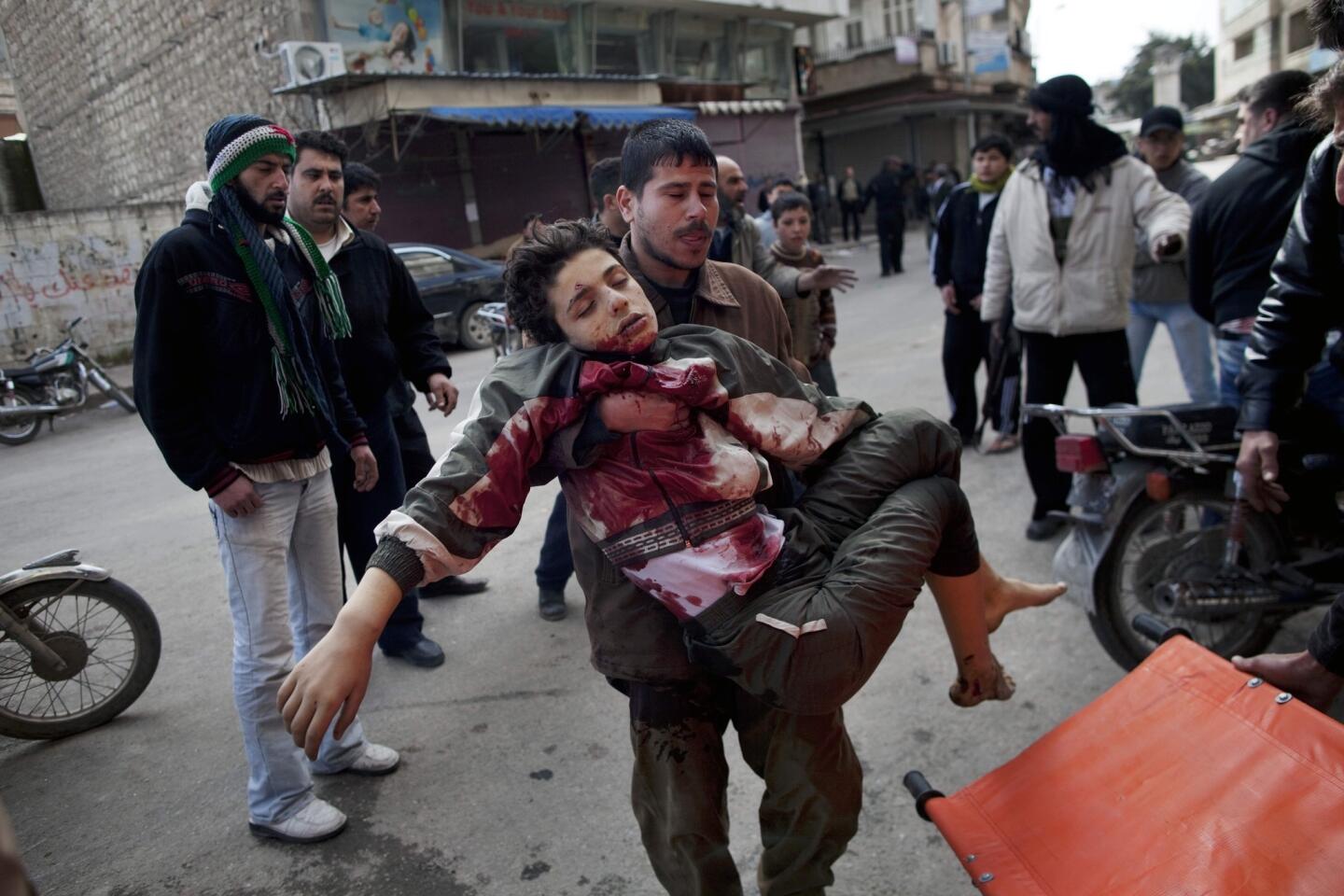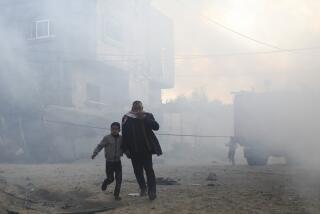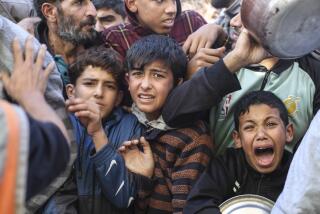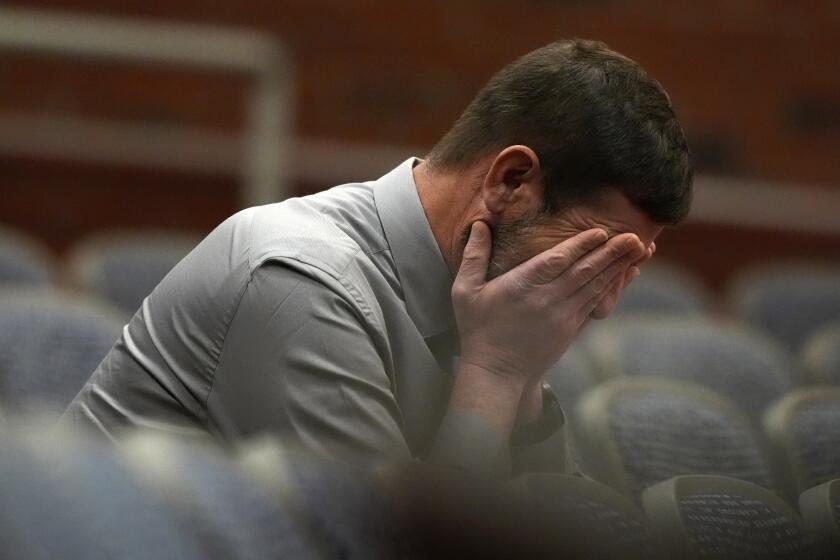83 dazed Syrians evacuated from Homs’ besieged Old City
HOMS, Syria — They were stuck in their apartments for long stretches, hustling for whatever food was available. Sniper fire and shelling were constant. There was only occasional cellphone contact with the outside world. Running water and electricity were rare.
A complex deal hammered out by the Syrian government, the United Nations and rebels led to a temporary cease-fire and the evacuation of 83 people from the Old City of Homs, many of them trapped for a year or more inside a rubble-strewn battleground.
Their plight garnered global attention during last month’s peace talks in Geneva. But it wasn’t until Friday that the besieged residents of the city’s historic center received some measure of relief. The fragile advance could prove important as another round of Geneva peace talks begins Monday. The government has been under intense international pressure to show it is committed to improving access for aid to blockaded areas.
Evacuations from Homs’ Old City are scheduled to continue for several days. Deliveries of food and other aid are expected to begin this weekend. About 1,500 to 2,000 civilians remain, according to estimates, though no one knows for sure.
The initial group of evacuees looked haggard and exhausted, though they did not appear to be starving. No outside aid had reached the old quarter since May 2012. Finding sufficient food had been a daily challenge amid the ubiquitous gunfire and shelling.
“Some people went out and scavenged for greens that might be edible,” said Abu Abdul Jawal, 54, a former taxi driver, as he dragged with satisfaction on a bummed cigarette, savoring a commodity that was also in short supply. “We lived always on the edge between life and death.”
Another man, a former chemistry and physics instructor who identified himself as Abu Ghassan, 56, said he just wanted it all to be over. “The minute you showed your face, your head could be shot and broken into a dozen pieces,” he said.
Most of Friday’s evacuees were middle-aged and elderly men, though there were also women and children. They departed in three buses driven by aid workers through a tree-lined no man’s land, normally a sniper’s alley between government and rebel lines that bisects the Orontes River, now roiling with winter snowmelt. On the government side, scores of troops and loyalist militiamen were ready with AK-47 rifles should anything go amiss.
A bulldozer helped clear a path through the debris-filled streets of the Old City as edgy U.N. and Syrian Arab Red Crescent workers guided their four-wheel-drive vehicles with blue U.N. flags beyond the last government checkpoint into rebel territory. The skeletal remains of shell-blasted apartment blocks loomed in the distance.
Later, evacuees wolfed down meals provided by aid workers in a temporary shelter set up in a former banquet hall outside the confines of the Old City. Doctors were on hand to check their condition. Syrian forces searched the evacuees and their battered suitcases, which appeared to mostly contain grimy old clothing.
Some cried as they emerged to freedom. Many profusely thanked U.N. officials and clerics, Muslim and Christian, who had gathered in an act of solidarity. Some couldn’t believe the ordeal had finally ended and appeared disoriented.
“Are we really out?” asked one woman, who was accompanied by her two grown daughters and four grandchildren. “Prove it to me!”
Some evacuees required wheelchairs; at least one was taken away in an ambulance.
Greek Orthodox Bishop George Abu Zakhm, who was among those greeting the evacuees, said he had heard from people trapped inside that the route to the site where the buses were picking up residents was circuitous and dangerous, and the perilous trek had dissuaded some from leaving, he said.
“They need to make it easier for people to get out,” the bishop said.
Still, the fact that people had gotten out infused some in this war-ravaged city with a sense of optimism. Government forces have gradually regained control of much of Homs, long a hotbed of the Syrian conflict.
The war has deeply divided the city — Syria’s third-largest — along sectarian lines, and profound animosities are evident. But some expressed hope that the coordinated effort to aid the residents could be a turning point.
“This is a limited success, but the real success would be getting people back into the Old City and rebuilding and carrying on normal lives again,” said Talal Barazi, governor of Homs province, who was on the scene helping to coordinate the closely choreographed relief effort.
The government announced Friday that it would attend the next round of peace talks, a decision that had been widely expected. Negotiators have focused on confidence-building measures such as improving access for humanitarian aid, since most observers say the chance for a peace deal is remote.
The government accuses opposition forces of requiring civilians to remain as “human shields” in Homs’ Old City, the Yarmouk district on the southern fringes of Damascus and elsewhere to cut down on military bombardment. The opposition says residents fear arrest and possible execution if they leave.
In recent weeks, food, vaccinations and other aid have begun to flow into Yarmouk, where about 18,000 people, mostly Palestinians, are estimated to be trapped .
A cease-fire was supposed to take hold in the Old City at 6 a.m. Friday, but at some point at least one shot rang out, violating the truce, officials said. It was unclear whether anyone was injured.
“We had some bumps, but this was a good beginning,” said Yacoub El Hillo, the U.N. humanitarian coordinator in Syria, who was at the scene overseeing the relief effort. “In coming days we hope to do more to relieve the suffering of the people of Homs and of Syria.”
At one point, El Hillo confronted Barazi, complaining that the evacuees were being asked to give their names. The deal mandated that only the ages of those leaving be provided, the U.N. official said. The governor then directed subordinates to stop demanding the names.
The evacuation deal stipulated that only “civilians” were eligible to leave, excluding an unknown number of rebels who hold sway in the wreckage of the Old City. The gunmen remained hunkered down in the ruins, surrounded by government forces. Their fate remains unclear. No men of fighting age were reported to be among those departing Friday.
The predicament of the remnant population of the Old City emerged as a significant side issue at last month’s peace talks. Diplomats, however, were unable to work out a deal to evacuate civilians and provide food and other aid to those stranded.
All evacuees will be allowed to go wherever they want, Syrian and U.N. officials said. The government has prepared makeshift shelters, with food and healthcare, for about 400 people, officials said.
With Friday’s evacuations complete, the 83 former residents reboarded buses to be taken to shelters for the evening.
“It’s an indescribable feeling,” said one woman, Um Hafed, who lamented that her husband had died in the Old City just nine days earlier. “It’s like I’m in another world.”
Special correspondent Nabih Bulos contributed to this report.
More to Read
Start your day right
Sign up for Essential California for news, features and recommendations from the L.A. Times and beyond in your inbox six days a week.
You may occasionally receive promotional content from the Los Angeles Times.
